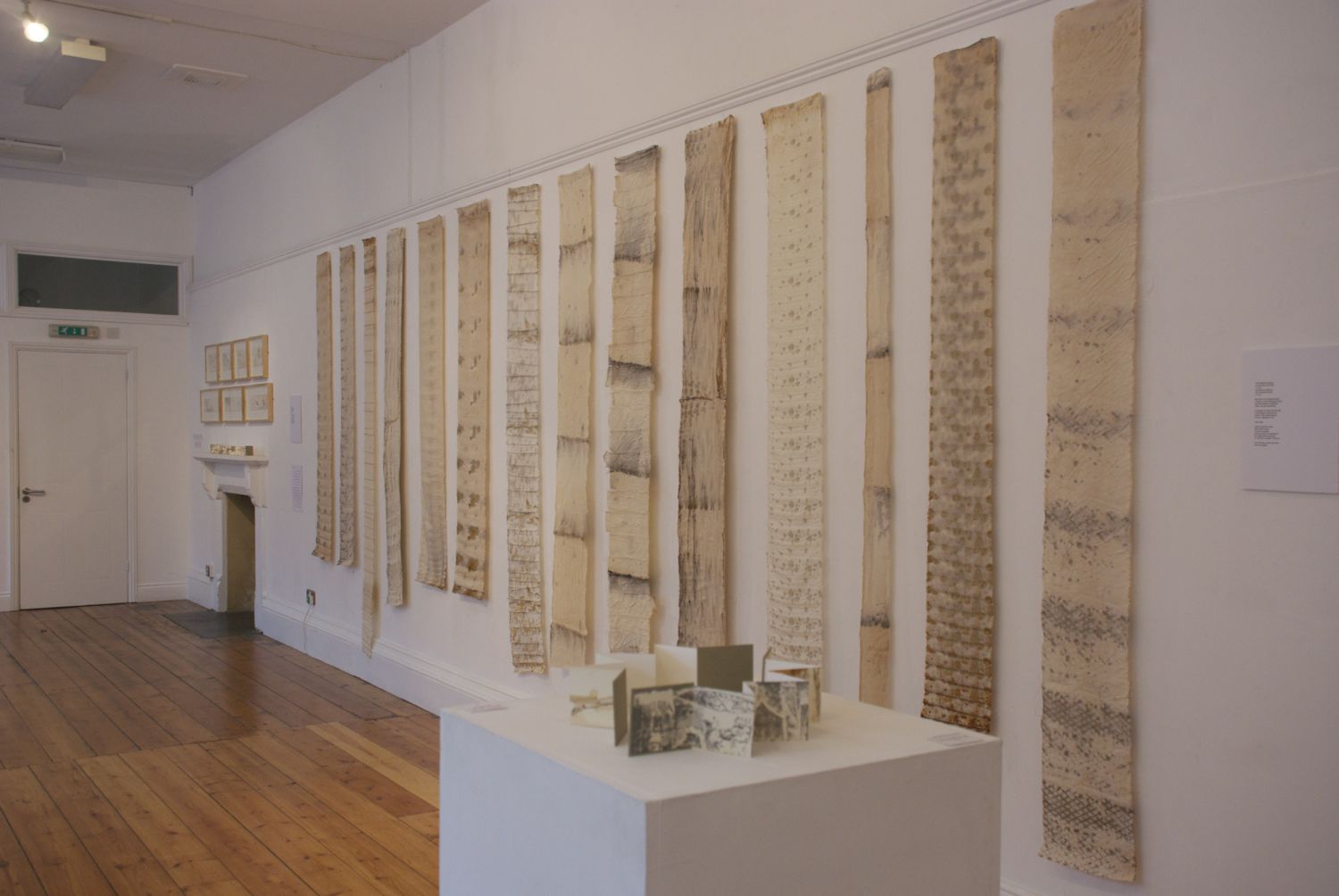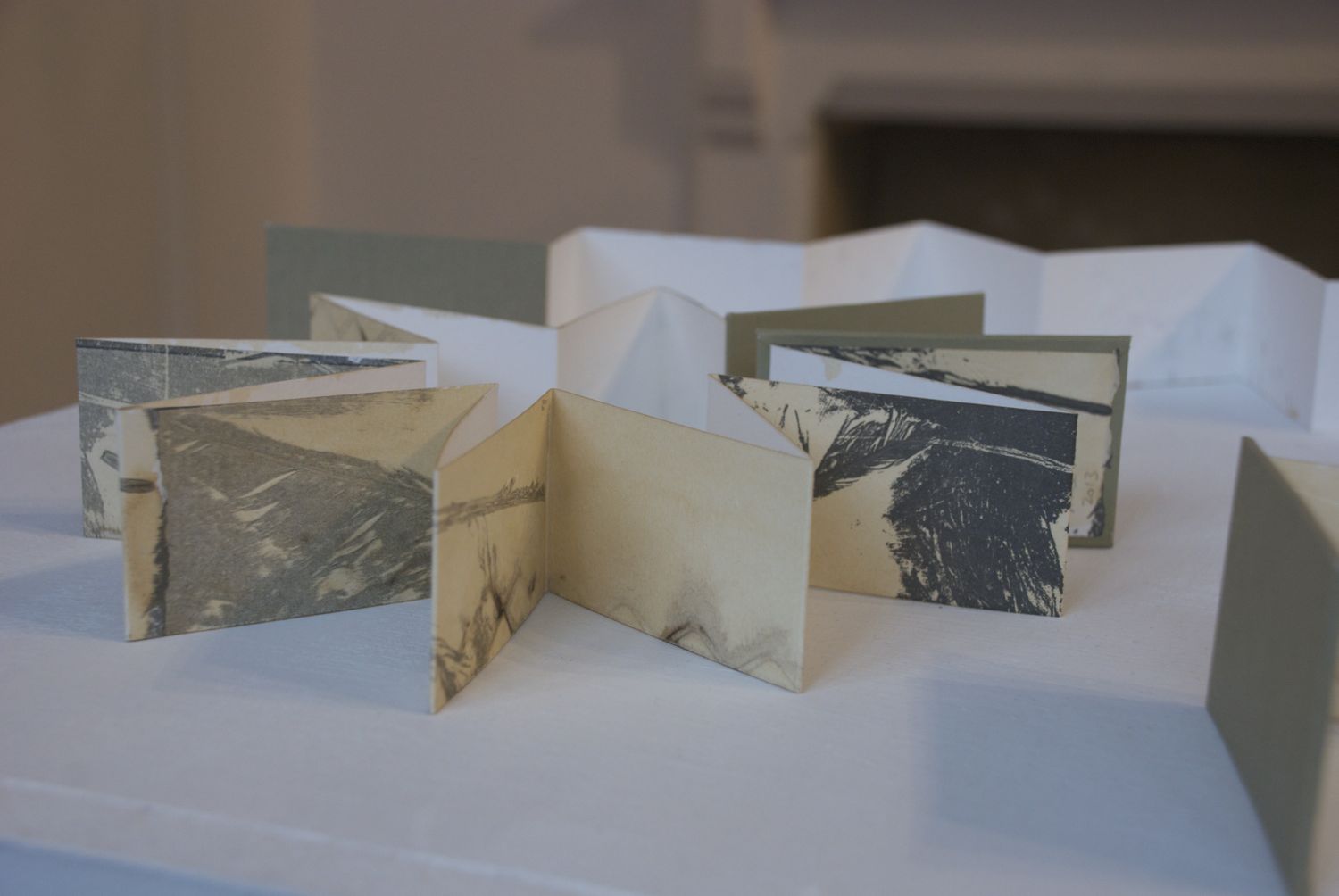I drove 150 miles to Gloucestershire in the rain on Friday to see what I could of the SITSelect exhibitions. My sat nav guided me up the steepest, narrowest lane with heart-stoppingly beautiful views (when I dared to look) to Newark Park. I read the advice to not use your sat nav only after that little adventure, once I was safely in the car park, checking the visitor information.
Newark Park showed work by 30 artists that was distributed throughout the house. It was lovely to see work displayed in a domestic rather than a gallery setting. Seven of the artists had created work that responded specifically to the house or its surroundings. Others had been selected by SIT patrons; others were artists involved in the Select Trail. Sometimes the juxtaposition of such different styles of work made for an uneasy combination and it wasn't always obvious when you were looking at site-responsive versus selected pieces. And sometimes you weren't sure whether work was part of the exhibition or part of the house... although this rather added to the enjoyment of exploring the house.
Three artists particularly caught my attention: Caroline Bartlett, Jane Ponsford and Jo Lovelock. Caroline Bartlett's piece "A stitch in the fragment of time" played with ideas about the fabric of the building. Porcelain discs that had been impressed with cloth and lace textures were inset into thick felt and displayed in a long glass case. Fragments of lace, stitches, fur and feathers were trapped in many of the discs. I liked the sense of something fragile being preserved - and the tension of fragments that appear to have a story behind them but, being removed from their original context, you can only guess at what that might be.
Jane Ponsford's "A landscape in ten parts" was a grouping of ten bell jars containing hand made paper forms that reminded me of nests, trees, reeds and other landscape elements. The paper was stained and marked with clay and other traces from the landscape. I liked the simplicity of the individual pieces but the way these worked as a group, overlapping and responding to each other, was really engaging. Jane Ponsford's website has more details about the thinking and process behind this piece.
Jo Lovelock's "Amiticia" was inspired by the previous owner's enormous collection of damaged china swans and used copies of letters and papers to produce a paper swan and accompanying quilt-like piece. The use of letters gave a sense of the people connected with the house and the network of friendships. I liked the visual impact of the variety of handwritten marks and the shadows made by the folds. See more about this on Jo Lovelock's blog.
The next morning (Saturday), I went to see Alice Fox's solo exhibition at Lansdown Hall. I was grateful that Alice took pity on me and let me in early out of the pouring rain. I've seen Alice's work before but this was a much broader cross-section of her work.
Alice's use of found objects to make marks on cloth or paper creates a direct relationship between the marks and the place these objects come from (usually, but not always, the coast). The palette is restricted - natural cloth, rust, tea, and printing ink, which keeps the focus on the marks. She adds collagraph, other printmaking and hand stitch in response to the organic marks generated by the objects. Sometimes this turns the marks into something that reminds me of a map, or the marks in the sand left by the tide. I particularly love Alice's concertina books and the way their long, thin format somehow captures the sense of a journey or a walk. In this exhibition, there were also some larger format works on paper, which were incredibly subtle and reminded me of the marks the water makes in wet sand on the beach. There is a review of this exhibition (different venue) here.
My final visit was to the exhibition Shadow and Line at the Museum in Stroud. This brought together nine artists working in textiles, turned wood, enamel, porcelain and mixed media. This was a strong exhibition and it was wonderful how work by the different artists worked so well together, echoing themes and aesthetic qualities.
Shadow and Line - Caroline Bartlett on the left wall; Elizabeth Turrell and Linda Brassington on the right.
There was more work by Caroline Bartlett - "Backwards, Forwards" - in which she has gone back to her older work, which used pleating and folding, and through scanning and redrawing has used this to create new pieces, like stitched drawings of the originals. The results look like geological or archaeological diagrams. I was absorbed for ages in studying the range of different hand stitched marks.
Of the remaining artists, three interested me in particular: Hilary Bower, Jilly Morris and Linda Brassington. I was particularly intrigued by the way they all manipulated, marked and altered the surfaces of the materials they used. Hilary Bower used humble materials (sandpaper, masking tape, greaseproof paper ...) into which she rubbed graphite, pastels and paint to create dark, shadowy, cloth-like surfaces. Behind glass, they were a real challenge to photograph.
There were two wonderful pieces by Jilly Morris where she had hand-drilled thousands of holes into inked and waxed paper to change the surface. But I was fascinated by another piece where she had explored the range of marks she could make with a printing roller. Close up, individual marks looked like extracts from a landscape drawing, but twenty strips of these linear marks combined into one piece had a huge impact.
Finally I admired the way Linda Brassington combined resist dye, discharge with powdered pigments and wax to create surfaces with such depth of colour and texture. There was a real sense of light being drawn into and absorbed by these dark surfaces. Some of the pieces are shown on Linda's Axisweb page.
Photos (in order): Caroline Bartlett, Hilary Bower, Jilly Morris, Linda Brassington.
I drove home again in dreadful weather and took most of Sunday off to recoup energy. I've seen so much and am still absorbing impressions and ideas, although thoughts about different surfaces, textures and mark-making (as ever) are uppermost.
For information about this and future events, see the SIT web site. You can also view this year's brochure online.
















